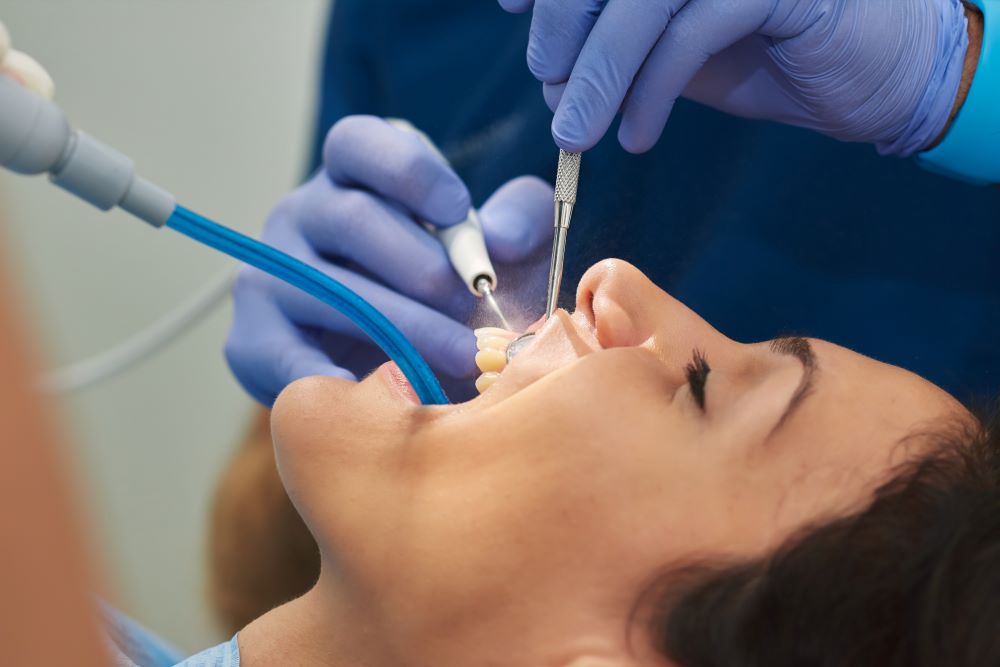Routine Care
- Home
- Routine Care
Routine Care
As we get older, dental care for adults is crucial. American Dental Association (ADA) recommends Dental check-ups and cleanings every six months, Establishing an oral health routine is important for a healthy mouth.Here are a few of the conditions to be aware of:
Dental Cleanings
Patients are encouraged to get a dental cleaning & check up once every six months. Tobacco, alcohol consumption, diabetes, pregnancy, and poor oral hygiene are just a few factors that the dentist will take into consideration when deciding how often you need your dental cleaning & check ups.

Professional dental cleanings (dental prophylaxis) are usually carried out by a Registered Dental Hygienist and consists of the following:
A procedure often has done by hand to remove plaque and tartar (calculus) from all tooth surfaces.
Consists of cleaning periodontal gum pockets, an indicator of gum disease, to prevent further gum problems. It is often called a gum treatment or deep cleaning.
A method used to remove any remaining stains and place the finishing touch on your teeth to give you a bright and beautiful smile.
Getting regular check-ups will help keep your gums and teeth healthy as well as detect early signs of disease such as gum disease, oral cancer and cavities. The best way to maintain good oral health is to visit your dentist on a regular basis.
If your home care routine of brushing and flossing has slipped and you have skipped your regular dental cleanings, bacterial plaque and tartar can build up on your teeth. The plaque and tartar, if left untreated, may eventually cause irreparable damage to your jawbone and support structures, and could lead to tooth loss.
Fillings have a life expectancy of eight to 10 years. However, they can last 20 years or longer. When the fillings in your mouth start to break down, food and bacteria can get underneath them and can cause decay deep in the tooth.
Dental Cleanings
Sealants can protect teeth from decay for many years, but need to be checked for wear and chipping at regular dental visits.Sealants are easily applied by your dentist or dental hygienist and the process takes only a few minutes per a tooth. The process entails thoroughly cleaning the tooth and surrounding it with cotton to keep the area dry. A special solution is then applied to the enamel surface to help the sealant bond to the teeth, which are then rinsed and dried. Sealant material is then carefully painted onto the enamel surface to cover the deep grooves or depressions.